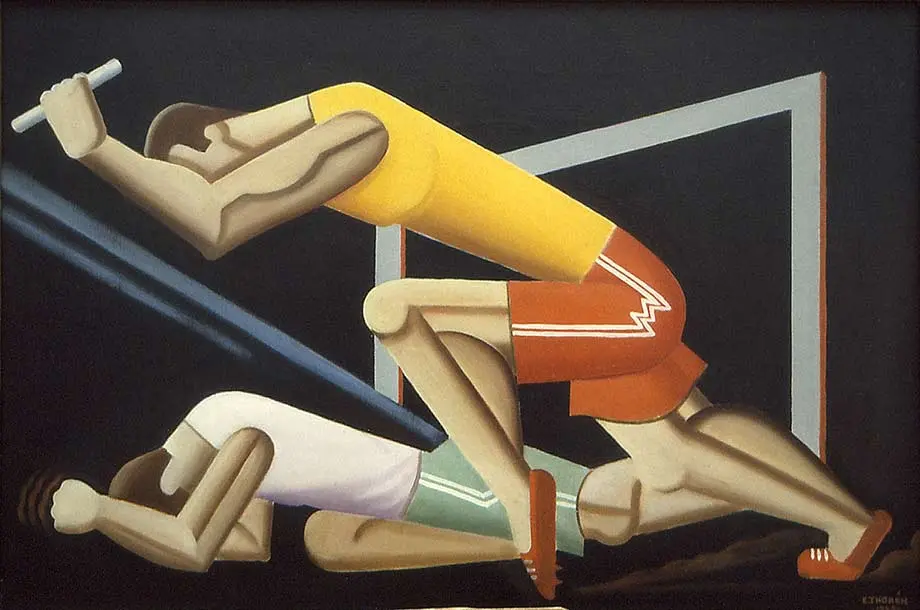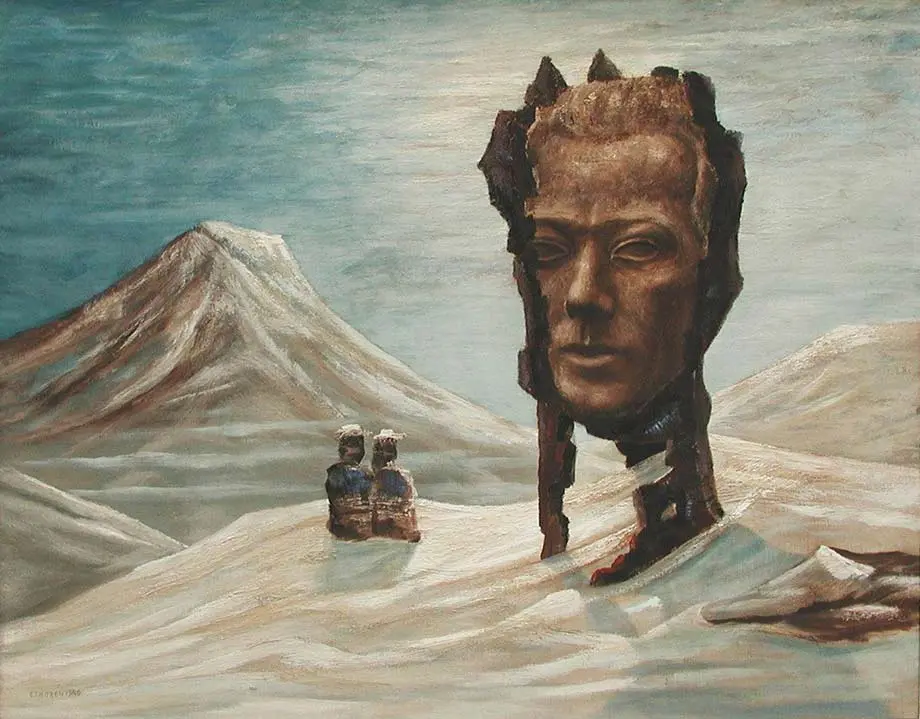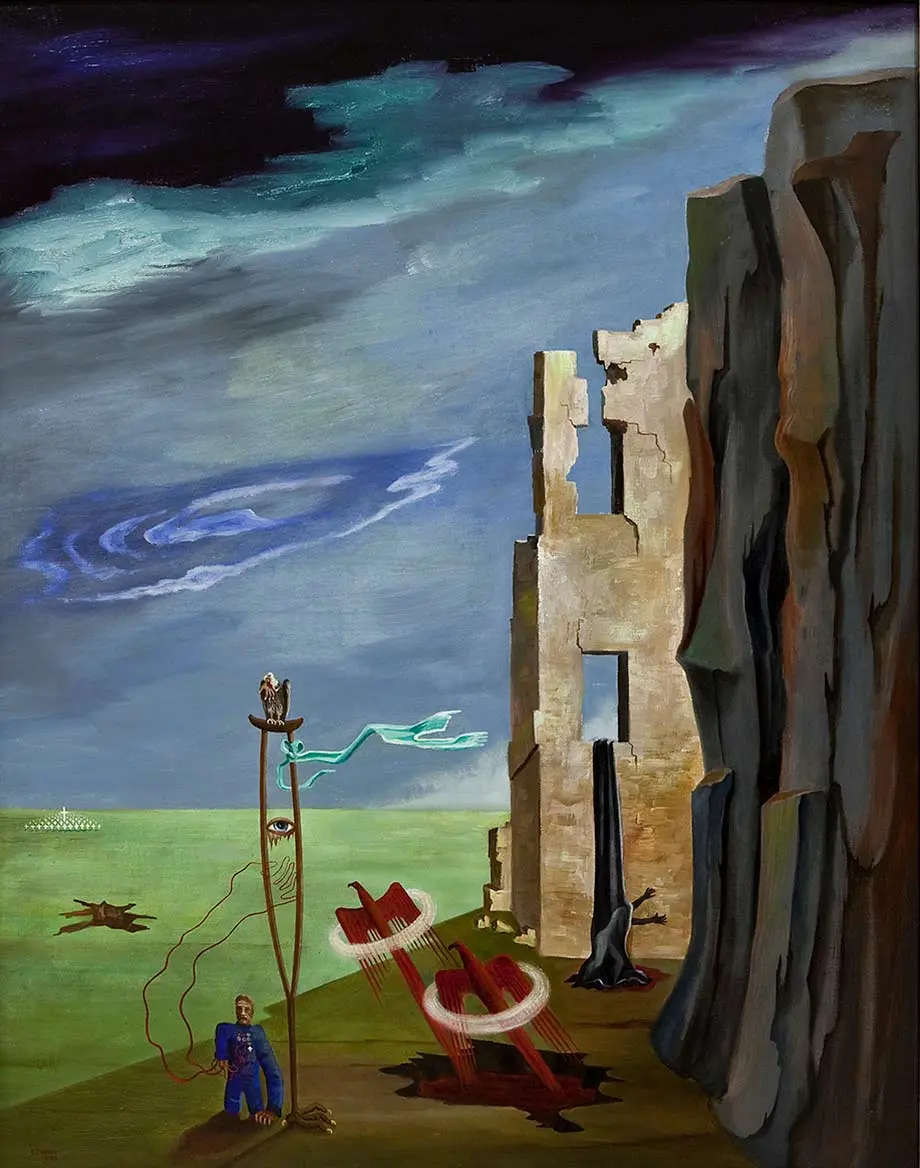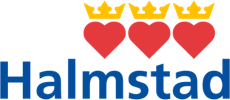Esaias Thorén
Esaias Thorén (1901–1981) was one of six artists in the Halmstad Group.
The early years
Esaias Thorén was born in Halmstad in 1901; his father was a carpenter, a maker of fine furniture and artistically inclined both in theatre and music. This influences Esaias who initially wants to be a musician. In 1919 he discovers Gösta Adrian- Nilsson (GAN) when he sees the painting Sparmanns flygning (Sparmann´s flight), after which he starts painting himself. In the early 1920´s Esaias works in his fathers workshop, experimenting in his free time with wooden sculptures and reliefs. 1923 Thorén comes in contact with Sven Jonson and together they create the group De Unga (The Young) with Axel Olson as their teacher. The group exhibits in Halmstad in 1924.Thorén studies at Carl Wilhelmsson´s painting school in Stockholm in 1925.
The Halmstad Group
In the autumn of 1926 he travels together with Sven Jonson to Paris where they draw under the auspices of the artist Otte Sköld. They find it difficult to support themselves without benefactors and return to Halmstad in the spring of 1927. They open Modern Reklam (Modern Advertising), a combined atelier and painting school that becomes a gathering point for the town´s artists and intellectuals.
In 1928 Esaias Thorén meets GAN for the first time. That same year, he also meets Stellan Mörner, the governor´s son who gets Thorén a commission to paint murals in the castle in Halmstad, the governor´s residence. In 1929, Thorén is among the founders of the Halmstad Group along with Waldemar Lorentzon, the brothers Axel and Erik Olson, Sven Jonson and Stellan Mörner. At the close of the decade, Thorén paints in a post cubist style, for example Instrument med blomma (Instrument with Flower) from 1929, but orients himself more and more towards Concrete Art and Purism. In 1930 he participates in the scandalous Stockholm exhibition Art Concret organised by Otto G. Carlsund.

Esaias Thorén, "Häcklöpare", 1929
Surrealism
Thorén studies graphics at the Royal Art School in Stockholm in 1931 and paints the same year the purist composition, Urnor och gul form (Urns and Yellow Shape) During the first half of the thirties, he also creates a series of sculptural objects and reliefs, under the influence of GAN, which have a cubistic/futuristic spirit. In the middle of the ´30s Thorén moves towards surrealism, as do the others in the Halmstad Group.

Esaias Thorén, "Huvudet med stensystrarna," 1940
Thorén´s surrealistic paintings are filled with symbolism and people in lively, often dramatic, settings. The sculptural character often returns in his surreal paintings. In 1935, together with the Halmstad Group, he participates in the international exhibition Kubisme=Surrealisme in Copenhagen and the international surrealism exhibitions in London in 1936 and 1937, and Paris in 1938.
World War II, the Söndrum Colony
During the latter half of the 30´s and the first half of the 40´s, Thorén´s surrealism is tinted by the troubled political climate in the world; for example works such as Blodsfåglar (Blood Birds) from 1936 and Spelet har börjat (The Game Has Begun) 1938.

Esaias Thorén, "Blodsfåglar", 1936
During the forties, along with Sven X:et Erixson, Felix Hatz, members of the Halmstad Group and others, he participates in the Söndrum Colony, a group of artists, poets and writers gathering at the coast outside Halmstad. Thorén leaves surrealism during the fifties and approaches a decorative style, painting still lifes during the sixties and seventies; often portraying beach finds, fish, and sculpture fragments. A surrealistic tone and playfulness continues to be evident in his work all through his life. Esaias Thorén passes away in 1981.
